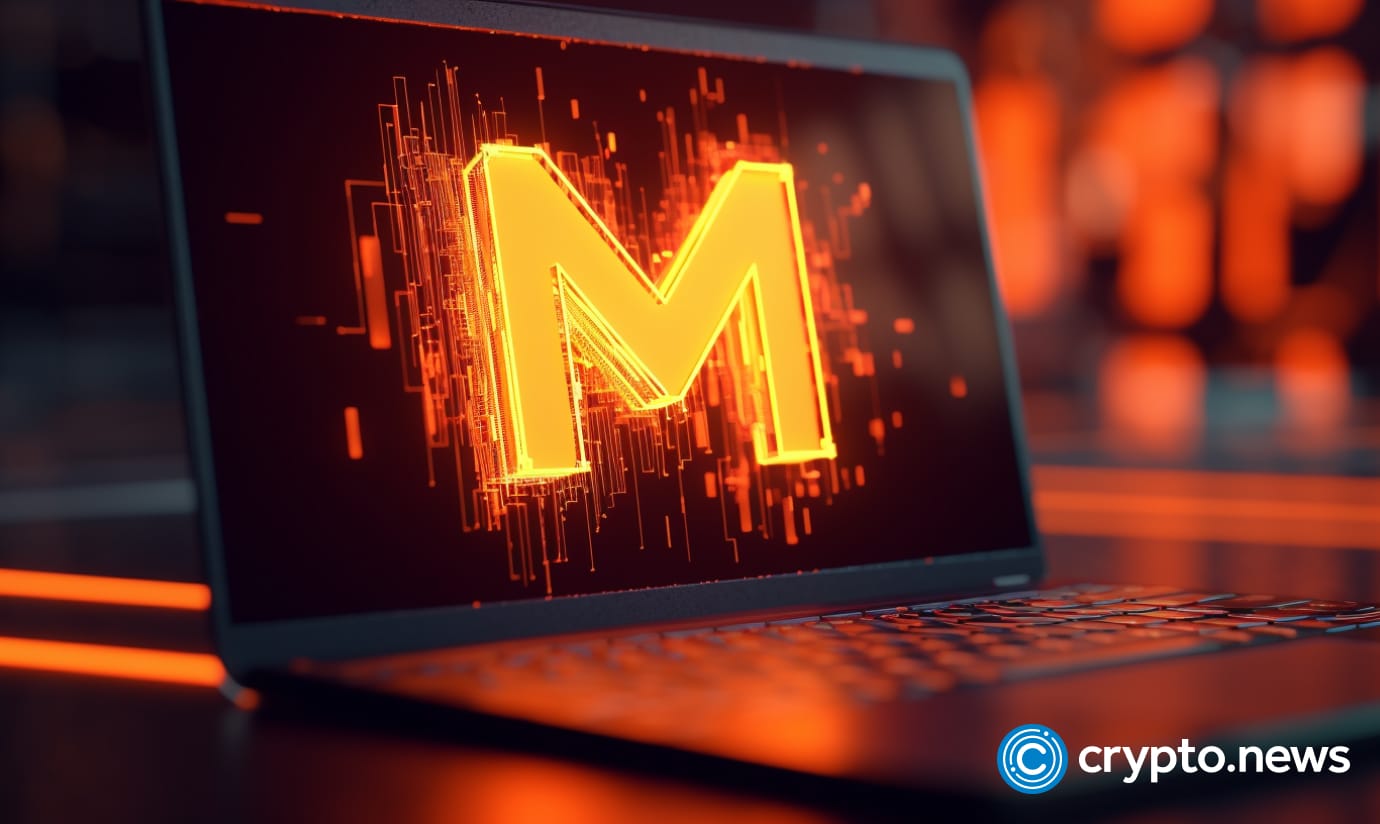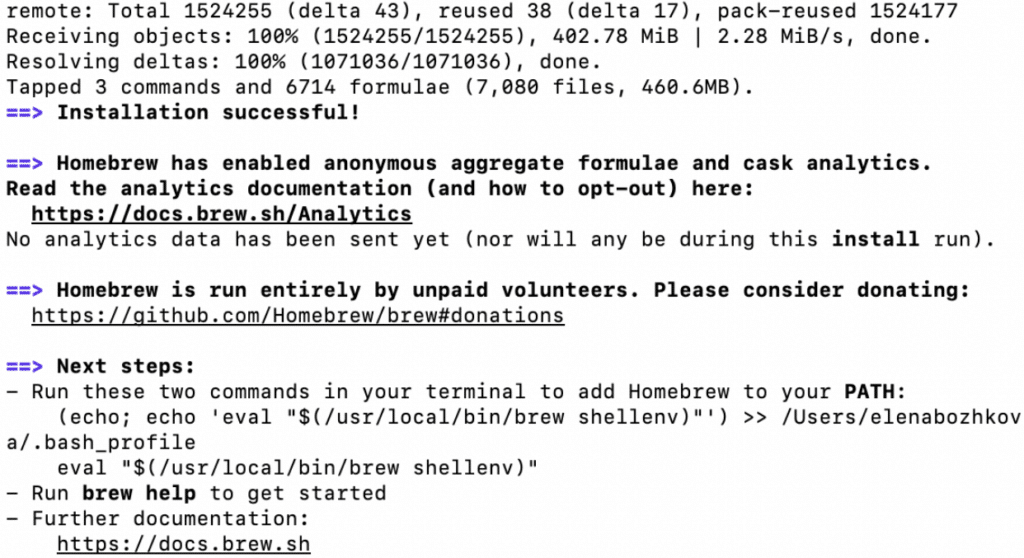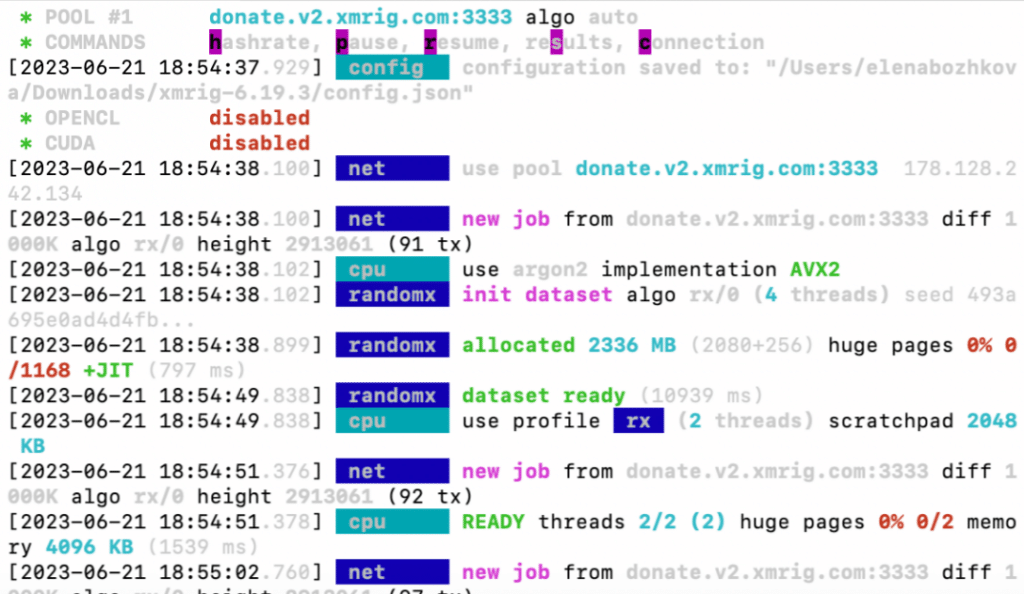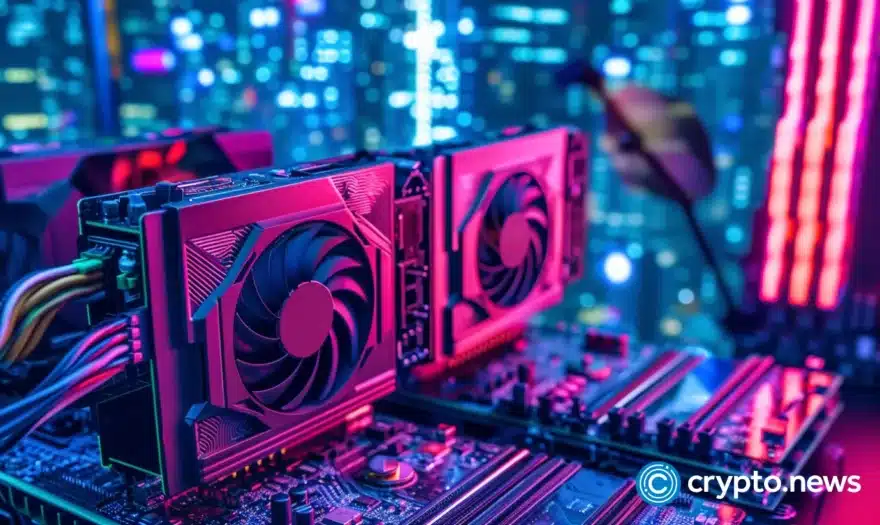How to mine monero on PC in 2023: beginners guide

In this guide, we explore the best ways to mine monero (XMR) on a Windows or Mac OS-based laptop or desktop. Before we get started with mining, let’s first understand the technology behind the privacy-centric cryptocurrency.
This is the third post of our Trade Code series. If you haven’t already, check out our latest post about writing your first Ethereum smart contract with minimal coding experience.
Guide summary
For those who do not need an in-depth guide, here is a condensed step-by-step guide for mining monero on Windows and Mac machines in 2023.
Mining monero on Windows:
- Download XMRig: Get the latest release for your system (32-bit or 64-bit) from the official XMRig GitHub releases page.
- Disable antivirus: Add an exception for XMRig in your antivirus software or disable it to prevent it from flagging the mining software as harmful.
- Extract XMRig: After downloading, extract the .zip file to a preferred location.
- Configure XMRig: Open the config.json file in the XMRig folder and make the necessary changes. You can use the official tool to make it easier.
- Start mining: Run xmrig.exe as an Administrator to begin mining. Monitor the console window for the miner’s performance and any errors.
Mining monero on Mac:
1. Install Homebrew: Enter the following command into a terminal and type the account password when prompted.
/bin/bash -c "$(curl -fsSL https://raw.githubusercontent.com/Homebrew/install/HEAD/install.sh)"Enter the two commands that are generated by the terminal following installation.
2. Install required packages: Use the following command to install the software required to run XMRig:
brew install cmake libuv openssl hwloc
3. Download XMRig: Get the latest Mac version suitable for your machine (ARM or X64) from GitHub.
4. Extract XMRig: After downloading, extract the .tar.gz file to a preferred location.
5. Configure XMRig: Open config.json file in a text editor and make necessary changes. You can use the official tool to make it easier.
6. Start mining: In the build directory, type ./xmrig and press enter. You should start seeing an output indicating the miner is operational.
How to mine monero (XMR)
There are two approaches to mining XMR, solo mining and pool mining. Both have their strengths and weaknesses.
Solo mining
As the name suggests, solo mining involves an individual doing all the work. You need to have your computer hardware (usually a powerful GPU or CPU), the monero mining software, and a monero wallet where your coins will be stored.
In solo mining, you alone are responsible for finding the solution to the complex cryptographic puzzle that allows a new block to be added to the blockchain. When you successfully mine a block, you receive the full block reward. This reward can be substantial, as it includes the monero coins created in the block as well as the transaction fees from transactions included in the block.
However, the catch is that the chances of solving the puzzle on your own are quite low unless you have significant computational power. In most cases, solo miners might go weeks, months, or even years without mining a single block, depending on their hardware’s power and the network’s total hashrate (computational power).
Pool mining
Pool mining, on the other hand, involves joining a group of miners who work together to solve the puzzle. The work and rewards are shared among the members of the pool.
In a mining pool, your computer contributes its computational power to the pool’s effort to mine new blocks. When the pool successfully mines a block, the reward is distributed among the pool members proportionally to the amount of computational power they contributed.
The key advantage of pool mining is the regularity of rewards. While each individual reward will be smaller than the full block reward a solo miner would get, you’re likely to get rewarded more frequently. This makes mining more predictable and reduces the risk of going for a long period without receiving a reward.
The downside is that you have to trust the pool operator to distribute the rewards fairly, and some operators may charge fees for participation in the pool.
In both cases, it’s important to remember that mining consumes a lot of electricity and can generate significant heat, which might require additional cooling. Moreover, the competitiveness of the mining process requires high-grade hardware, which can be costly. Always evaluate the costs and potential returns before diving into mining cryptocurrency, be it monero or any other.
Why can you mine monero anywhere?
Monero is more practical to mine on consumer hardware thanks to its proof-of-work (PoW) algorithm RandomX, which is designed to be more efficient on CPUs (Central Processing Units). This is in stark contrast to many other cryptocurrencies such as bitcoin (BTC) , which use algorithms that have become heavily optimized for specific hardware like ASICs (Application-Specific Integrated Circuits).
RandomX was introduced in late 2019 to make monero mining more accessible and to help maintain the decentralization of the monero network. It uses a random code execution and memory-hard techniques to achieve ASIC resistance and is thus more CPU-friendly.
Here’s how RandomX enables better mining performance on consumer hardware:
- Random Code Execution: The RandomX algorithm generates a pseudorandom program for each new hash that needs to be calculated. This program is then executed on a virtual machine, which has been designed to use features of modern CPUs. This essentially randomizes the mining process, making it difficult for ASICs to gain a significant advantage because their design cannot be optimized for random calculations.
- Memory-Hard Technique: RandomX also uses a lot of RAM (Random Access Memory) – about 2GB per thread. This makes the algorithm “memory-hard.” ASICs typically don’t have much memory and are not well-optimized for memory-intensive tasks. In contrast, most modern consumer CPUs have a large amount of high-speed cache memory, which can be used effectively by the RandomX algorithm.
By leveraging these techniques, the RandomX algorithm helps level the playing field between specialized, expensive hardware and regular consumer-grade CPUs. This promotes decentralization as it allows a broader range of people to participate in mining, rather than just those with access to expensive, specialized equipment.
However, keep in mind that while the mining process is more feasible with consumer-grade hardware, it still requires significant computing resources and electricity. Potential miners should always consider these factors when deciding whether or not to mine XMR or any other cryptocurrency.
Mining monero on Windows
The software recommended for mining by the official getmonero.org website is XMRig and CSminer. Both support Mac, Linux and Windows — this guide will focus on using XMRig on both operative systems. A Linux guide is not included, mostly because if you use Linux you are most likely already familiar with using simple command line tools such as XMRig and only need to read its GitHub page.
To use XMRig, follow the following simple steps:
- System requirements: Before you start, ensure that your computer meets the system requirements for mining. You’ll need a reasonably powerful CPU, at least 2GB of RAM per thread, and a stable internet connection.
- Download XMRig: Visit the official XMRig GitHub releases page and download the latest release for Windows. Make sure to choose the right version for your system (32-bit or 64-bit).
- Disable antivirus: Most antivirus software will flag mining software as potentially harmful due to its association with malicious mining (cryptojacking). You might need to add an exception for XMRig in your antivirus software.
- Extract XMRig: Once downloaded, extract the .zip file to a location of your choice.
- Configure XMRig: Inside the XMRig folder, you will find a file called config.json. Open this file in a text editor. You’ll need to make a few changes. You can generate your config file with this online tool recommended in the official XMRig documentation. This will require you to choose your pool if you intend to use one, enter your wallet address, choose if you want to use your CPU (the best choice in most cases, but experimenting to find out the best solution is recommended when unsure), CUDA for Nvidia GPUs and OpenCL for AMD GPUs and lastly the percentage of profits donated to XMRig development.
- Start Mining: Right-click on the xmrig.exe and run it as an Administrator to start mining. A console window will open, and you should see an output indicating that the miner is working. After it syncs with the network, you will be able to see your hash rate, the results accepted by the pool, and any errors that occur.


Mining monero on Mac
Mac’s Unix-like environment means that its terminal can easily be used to carry out most of the operations that on Windows were performed by clicking and dragging. Also, you can compile the software from source. To do this you will need Mac’s package manager — a terminal interface for downloading and installing software — called Homebrew. To install it, all you need is enter the following command into a terminal and type the account password when prompted (for security, it will appear as if you were not typing anything):
/bin/bash -c "$(curl -fsSL https://raw.githubusercontent.com/Homebrew/install/HEAD/install.sh)"After the installation is done, you will be prompted to enter two more commands.

After entering the indicated commands, use Homebrew to install the packages required by Homebrew with the following command:
brew install cmake libuv openssl hwloc
At this point, the remaining steps are more or less the same that we’ve seen on Windows, but without fighting with antivirus software:
- Download XMRig: Download the latest Mac version of XMRig suited for your machine (ARM or X64) from GitHub.
- Extract XMRig: Once downloaded, extract the .tar.gz file to a location of your choosing.
- Configure XMRig: Inside the XMRig folder, you will find a file called config.json. Open this file in a text editor. You’ll need to make a few changes. You can generate your config file with this online tool recommended in the official XMRig documentation to make this easier. This will require you to choose your pool if you intend to use one, enter your wallet address, choose if you want to use your CPU (the best choice in most cases, but experimenting to find out the best solution is recommended when unsure), CUDA for Nvidia GPUs and OpenCL for AMD GPUs and lastly the percentage of profits donated to XMRig development.
After you generate your configuration file, place it as config.json in the build directory you previously created. - Start mining: With the build directory open in the build directory type
./xmrigand press enter. You should see output indicating the miner is operational, which will include your hash rate and any accepted results from the pool.

Is it profitable to mine monero (XMR)?
Mining monero in 2023 may be profitable due to its RandomX algorithm, which decreases the potential advantages of expensive, specialized mining hardware and consumer-grade CPUs. This ensures greater decentralization as it encourages broader participation, making XMR mining more accessible than mining other cryptocurrencies.
However, potential miners should bear in mind the significant computational resources and electricity that cryptocurrency mining entails. It’s essential to weigh these costs against potential returns before committing to mining monero or any other cryptocurrency.
Also, miners must be prepared to trust their chosen mining pool operators with fair distribution of rewards.
We hope that this guide will facilitate the process for those considering to mine XMR, and encourage new participants to contribute to maintaining the decentralization of the monero network.
FAQs
How much can you make mining monero?
How much you can make mining monero varies greatly based on several factors. These include:
1. The price of monero. This changes regularly, based on market forces.
2. The hash rate of your mining setup. This is the speed at which you can mine, determined by the hardware you use.
3. The cost of your electricity. Mining uses significant power, which can cost a lot depending on your local electricity rates.
4. The difficulty of mining. This increases over time as more coins are mined.
5. The fees of the mining pool you participate in, if any.
You can use a calculator such as CryptoCompare’s to get an estimate.
Should I mine Monero solo or join a mining pool?
Whether to mine solo or join a mining pool is up to your personal preference and resources.
Solo mining means you alone are trying to solve the cryptographic puzzle that allows you to add the next block to the blockchain and get the reward. This could potentially bring in more profits, but the probability that you gain any monero at all is low unless you dispose of a very high hashrate.
Mining pools are groups of miners who work together to solve a puzzle. When the pool solves the puzzle, the reward is split between the pool members. This provides more consistent but smaller payouts.
How many Monero coins can I mine?
The number of monero coins you can mine is theoretically unlimited, as monero has a unique emission curve compared to many other cryptocurrencies. After the main emission curve ends, it will still continue to supply new blocks at a constant tail emission of 0.6 XMR/block to ensure miners are incentivized to continue mining and thus keep the network secure. However, the actual number of monero you can mine is still dependent on many factors, such as the power of your mining rig, the cost of your electricity, and the difficulty of mining.
What is the environmental impact of monero mining?
Like all cryptocurrency mining, monero mining requires a lot of electricity, which can contribute to carbon emissions and environmental degradation. However, monero uses a different proof-of-work algorithm called RandomX, which is designed to be efficient on consumer CPUs. This means that Monero mining can potentially have a smaller environmental impact compared to bitcoin mining, which requires specialized, energy-intensive ASICs that has no purpose and ends up in landfills when newer and more efficient ASICs make them obsolete. That said, any cryptocurrency mining can still have a significant environmental impact, especially when done on a large scale.














